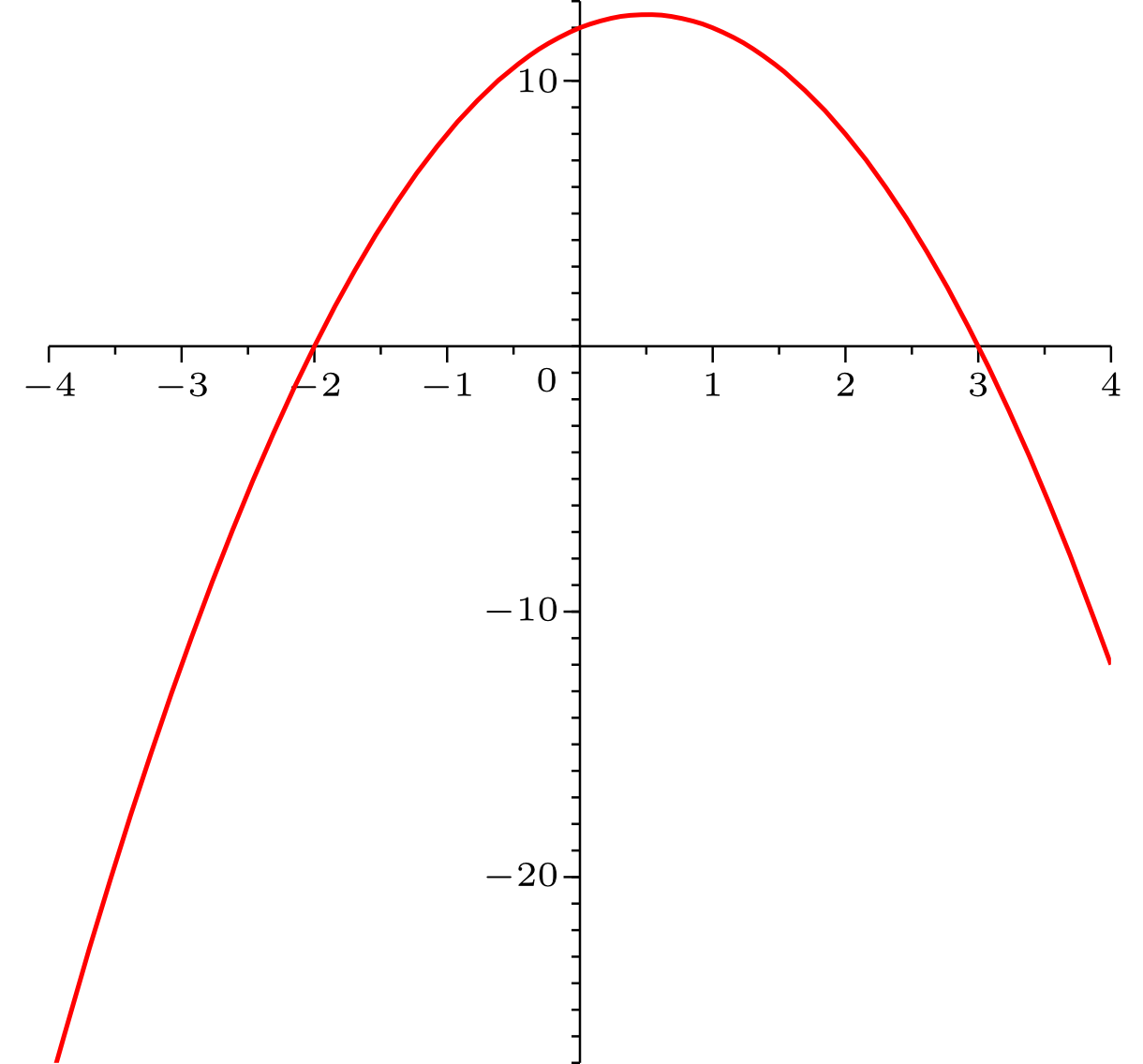Chapter 1 Elementary Arithmetic
Section 1.3 Transformation of terms1.3.4 Representation as a Sum and as a Product
Mathematical expressions can be written in different ways that all have their own pros and cons. We distinguish them based on which mathematical operation is to be performed last. The most common types are the representation as a sum and the representation as a product.
Info 1.3.14
For a representation as a product, it is the multiplication that is performed last. Because of the order of operation rule, if any of the factors involves an addition or subtraction, then having the multiplication be last can only be achieved by enclosing the factors in brackets. Product is particularly useful for determining cases in which a term takes the value zero. This happens if and only if one of the factors takes the value zero.
For example, the term is zero if or . For all other values of the term takes a non-zero value.
Info 1.3.15
For a representation as a sum it is the addition or the subtraction that is performed last. Because of the order of operation rule, terms without brackets are automatically in this representation, provided they contain any addition or subtraction at all. From the representation as a sum the asymptotic behaviour of an expression can often be deduced. The asymptotic behaviour of a function describes how the function behaves if the variable takes arbitrarily large values. For polynomials, for example, the asymptotic behaviour is determined by the term with the largest exponent.
To change from one representation to another, several methods exist.
Example 1.3.17
The function is multiplied out as follows:
Exercise 1.3.18
Expand the following terms completely and collect like terms. Describe the asymptotic behaviour of the final expression:
- =
.
Description of the asymptotic behaviour:
As approaches the function approaches
.
As approaches the function approaches
.
You can enter limits and asymptotes as unendlich or infinity, likewise -unendlich or infinity for . the asymptotic behaviour will be explained in a later chapter of this module. If you are not familiar with the symbols you can skip this exercise part.
- =
.
- =
.
- =
.
Exercise 1.3.19
The following graph corresponds to a polynomial of degree two:
From the graph, derive the representation of as a product.
From the graph, derive the representation of as a product.
- The graph has two zeros and . Multiplied out the two factors resulting from this fact, we get the polynomial = .
- The polynomial does not correspond to the graph since at it takes the value
whereas the graph shows that the function at takes the value
. This difference can be corrected by setting , where = .
- This finally gives the representation of as a product: = .
Exercise 1.3.20
Fully expand the expression: = .
 Onlinebrückenkurs Mathematik
Onlinebrückenkurs Mathematik
